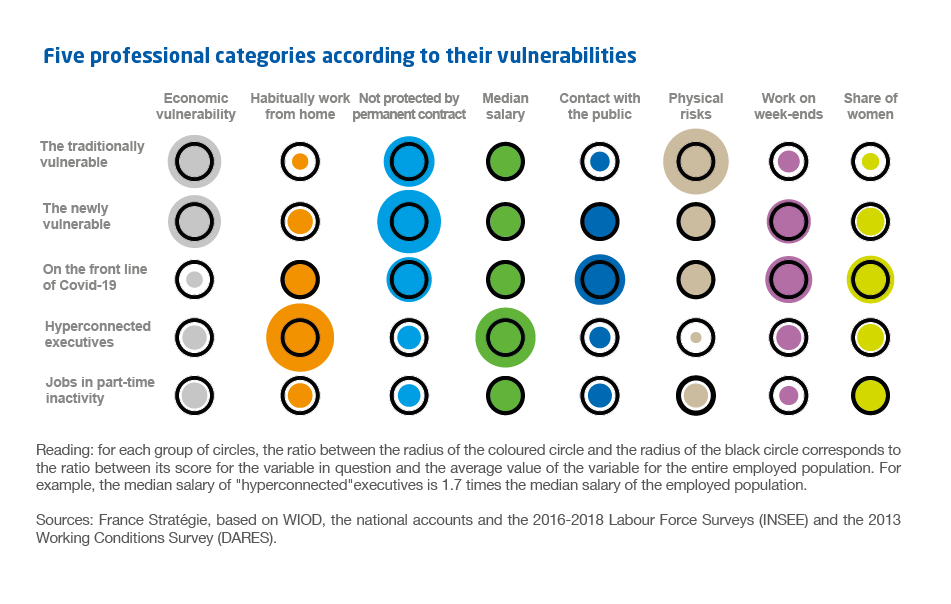
The jobs that can be described as "traditionally vulnerable" combine the difficulty of working remotely and often holding a precarious status (one in five workers within this category is on fixed-term or temporary contract). These 4.2 million workers, who are mostly men, are craftsmen, industrial and construction workers, and are traditionally confronted with difficult living and working conditions.
The "newly vulnerable" (4.3 million jobs) are facing an unprecedented crisis linked to the very exercise of their profession, which brings them into contact with the public. Their activities have been slowed down or even banned, which all the more puts them in vulnerable position given their job statuses (31% of these individuals hold intermittent contracts or are self-employed). For those working in the transport, hotel and restaurant, personal services, art, culture and sport sec- tors, their financial vulnerability is coupled with uncertainty about the future.
The 10.4 million professionals working directly or indirectly on the "front line" are those whose activities are deemed essential in this crisis. These are all the professions related to health, edu- cation, cleanliness, food and its distribution, as well as traditional “law and order” professions. Although they have little economic vulnerability, three quarters of them are nevertheless exposed to health-related vulnerability through their direct contact with the public. Situating themselves amongst the lowest paid and more female-dominated professions, these occupations are exposed to an intensification of work.
The fourth group, the teleworkers are exposed to a new risk of hyperconnectivity (3.9 million jobs). Mainly occupied by managers, these professions must, from a distance, ensure the continu- ity of work and prepare the return to activity. Usually subject to higher work intensity, their mental workload and difficulties in reconciling family life have been exacerbated by the crisis.
Finally, many intermediate professions or skilled employees (4 million jobs), most often in partial inactivity, are protected from short-term dismissal by their status. However, their difficulty in working remotely exposes them to risks of distance from the professional sphere as well as desocialization.








